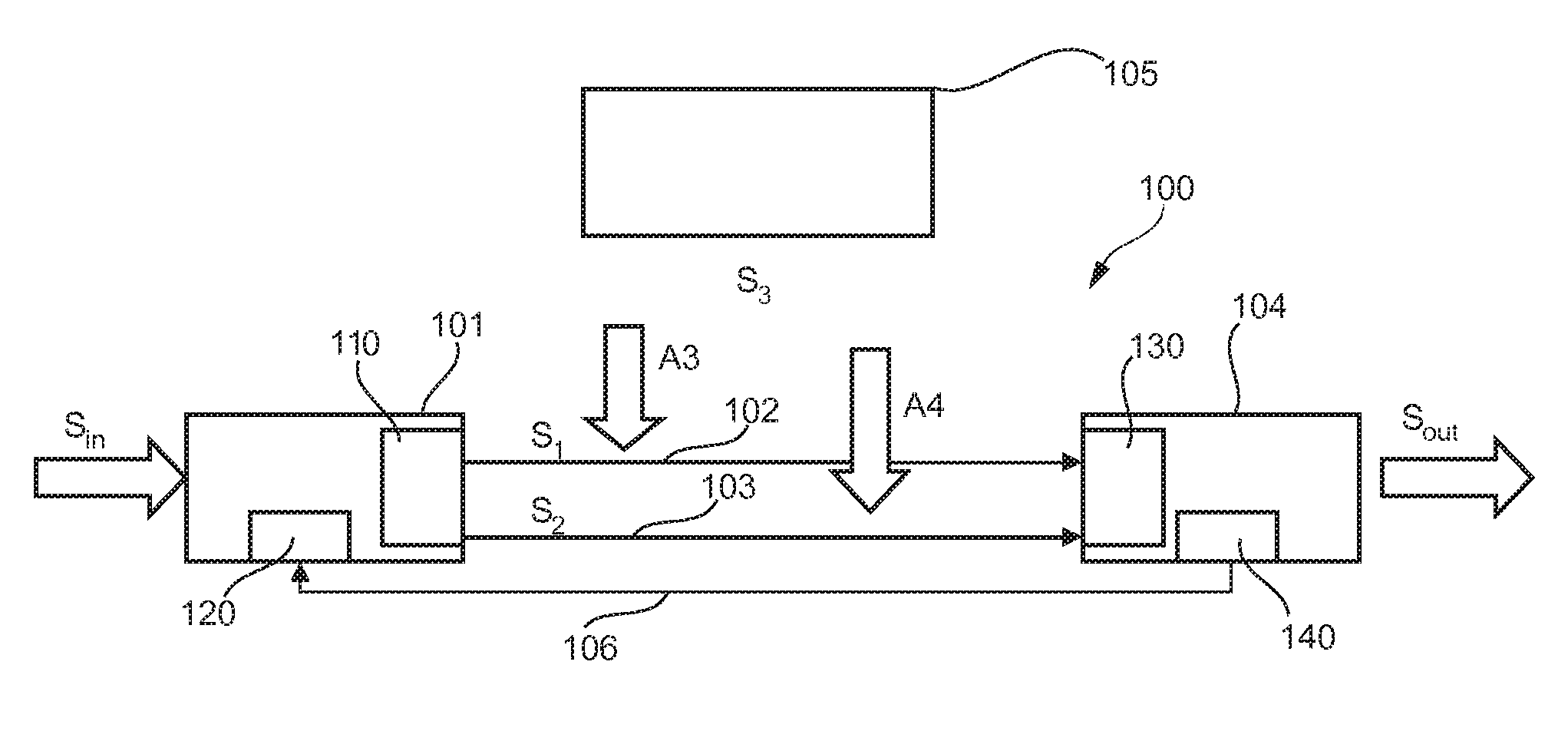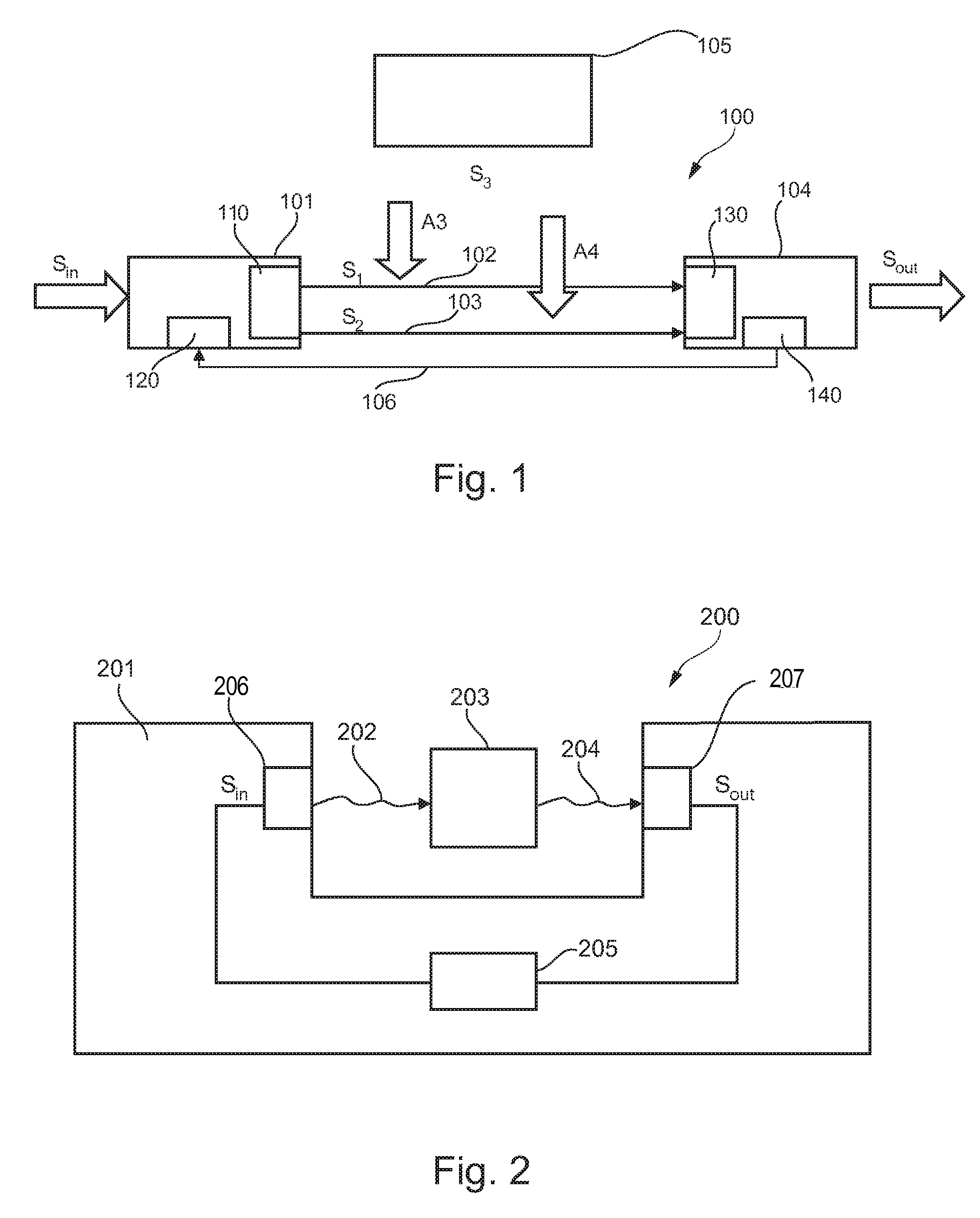Signal transmission system
a transmission system and signal technology, applied in the direction of instruments, electric controllers, ignition automatic control, etc., can solve the problems of common mode interference, conventional data transmission systems suffer from insufficient signal quality, etc., and achieve the effect of suppressing the influence of interfering signals
- Summary
- Abstract
- Description
- Claims
- Application Information
AI Technical Summary
Benefits of technology
Problems solved by technology
Method used
Image
Examples
Embodiment Construction
[0039]The illustration in the drawing is schematically. In different drawings, similar or identical elements are provided with the same reference signs.
[0040]FIG. 1 shows a signal transmission system 100 according to an embodiment of the invention.
[0041]The signal transmission system 100 comprises a transmitter device 101 for transmitting a first signal s1 via a first data transmission channel 102 and for transmitting a second signal s2 via a second data transmission channel 103 to a receiver device 104. The signals s1 and s2 may be differential signals.
[0042]An input signal sin is supplied to an input of the transmitter 101. This input signal sin is processed within the transmitter 101 to generate the pair of differential signals s1 and s2 having opposite phase.
[0043]In this example, a source of interference 105 acts on the signals s1 and s2 during transmission over data transmission lines 102 and 103. The interference signal is denoted with s3. According to this embodiment, the in...
PUM
 Login to View More
Login to View More Abstract
Description
Claims
Application Information
 Login to View More
Login to View More - R&D
- Intellectual Property
- Life Sciences
- Materials
- Tech Scout
- Unparalleled Data Quality
- Higher Quality Content
- 60% Fewer Hallucinations
Browse by: Latest US Patents, China's latest patents, Technical Efficacy Thesaurus, Application Domain, Technology Topic, Popular Technical Reports.
© 2025 PatSnap. All rights reserved.Legal|Privacy policy|Modern Slavery Act Transparency Statement|Sitemap|About US| Contact US: help@patsnap.com


